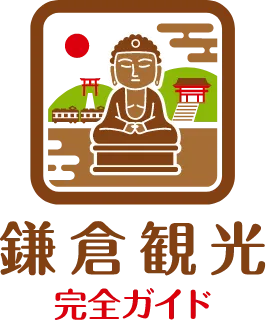Kakuon-ji Temple (覚園寺)
Discover the Sacred Grounds
Kakuon-ji Temple is a historic sanctuary nestled in the quiet Nikaido valley in eastern Kamakura (鎌倉). Founded in the early 13th century, its origin story is tied to Hojo Yoshitoki (北条義時), the second regent of the Kamakura shogunate, who was said to have been saved by a divine white dog, the guardian deity Inu-gami (戌神), in a prophetic dream.
Later, Hojo Sadatoki (北条貞時), the ninth regent, developed the site as a place to pray for national peace and protection against disasters. It became a center for the integrated study of Shingon, Ritsu, Zen, and Jodo Buddhism. During the Nanboku-cho and Muromachi periods (14th to 16th centuries), it also served as a prayer site for Emperor Go-Daigo (後醍醐天皇) and Ashikaga Takauji (足利尊氏).
Architectural Highlights and Seasonal Beauty
The temple grounds unfold along a mountain ridge, preserving the natural terrain and offering tranquil vistas unique to Kamakura (鎌倉). Especially captivating are the autumn foliage displays from late November to mid-December, enhanced by atmospheric nighttime illuminations.
The Yakushi Hall, rebuilt in the mid-14th century by Ashikaga Takauji (足利尊氏), still houses his original wooden ridge tag. In the late 17th century, several temple structures were modified with single-tiered roofs, lending a simple yet dignified charm to the complex.
Cultural Significance and Spiritual Power
The temple’s principal icon, the seated statue of Yakushi Nyorai (薬師如来坐像), dates from the Kamakura (鎌倉) to Muromachi periods and has long been venerated for healing and peace of mind. Accompanied by the Sunlight and Moonlight Bodhisattvas and the Twelve Heavenly Generals, the statue ensemble is a designated Important Cultural Property of Japan. Visitors can quietly offer prayers in this solemn space.
Seasonal Events and Immersive Experiences
On August 10th, the temple holds the Kuro-Jizo Ennichi (黒地蔵縁日), also known as “Kura-yami Mairi” or the midnight pilgrimage, welcoming worshippers from midnight to noon. This otherworldly summer event allows for a rare, contemplative nighttime experience inside the silent temple grounds.
This experience is best enjoyed by those staying at flexible, kitchen-equipped accommodations like Tosh’s Place (トシズプレイス), which allow you to participate in local events as if you were living in Kamakura (鎌倉), not just visiting. It offers a deeper immersion into the mystique of a Kamakura summer night.
Unique Rituals and Goshuin
In addition to the standard goshuin for Yakushi Nyorai (薬師如来), visitors can receive a special seal for Inu-gami (戌神), the deity said to have saved Hojo Yoshitoki (北条義時). Receiving these stamps in the serene temple grounds is a meaningful spiritual experience.
The Kuro-Jizo (黒地蔵) is believed to rescue sinners from the torments of hell and is said to return to black no matter how often it is repainted. As wishes are fulfilled, devotees return small statues, which are placed in the Thousand-Body Hall, increasing in number year by year.
Access and Visiting Hours
To reach Kakuon-ji Temple, take a bus bound for “Daito-no-miya” from JR Kamakura Station (鎌倉駅) and walk about 10 minutes from the final stop. The temple is located in a serene mountain valley.
Regular admission is from 10:00 AM to 3:00 PM. The temple may close in case of rain or poor footing. It is closed annually from December 20 to January 7, and throughout August. Entry requires a fee, and visitors follow a set route in silence. Photography, sketching, and eating are prohibited.
While guided tours by monks have been suspended, special tours may be arranged for groups or upon request. On select days, reservation-only special openings allow access to usually closed halls and statues, offering a deeper look into the temple’s history and faith.
When to Visit
The best time to visit is during the fall foliage season from late November to mid-December, especially during the nighttime light-ups. Spring greenery and early summer foliage are also beautiful. As the opening hours are short, planning for a morning or early afternoon visit is ideal.
Nearby Attractions to Explore on Foot
Within walking distance from Kakuon-ji Temple, you’ll find historical and spiritual sites such as Kamakura-gu Shrine (鎌倉宮), Egara Tenjin Shrine (荏柄天神社), and the Site of Yofuku-ji Temple (永福寺跡). Along nearby hiking trails, statues of Kukai (空海) can be found, blending nature and faith. The Former Uchiumi Residence (旧内海家住宅) offers a rare glimpse into Edo-period life and architecture.
Who Will Love This Place?
- History lovers: Learn about the Hojo clan and Ashikaga Takauji (足利尊氏)
- Devotees and sculpture enthusiasts: View Important Cultural Properties like the Kuro-Jizo (黒地蔵)
- Nature seekers: Enjoy Kamakura’s (鎌倉) unique valley landscapes and seasonal transitions
- Flexible travelers: Perfect for free-style exploration and off-peak visits
Wrap-Up: Kakuon-ji Temple and the Value of Exploring Kamakura from a Local’s Lens
Kakuon-ji Temple, born from a vision seen by Hojo Yoshitoki (北条義時), stands as a living heritage of Kamakura’s (鎌倉) spiritual and historical depth. Surrounded by silence and natural beauty, it offers a place to reflect and reconnect. When staying at Tosh’s Place (トシズプレイス), a flexible morning or afternoon visit lets you embrace this serene world beyond conventional tourism.
